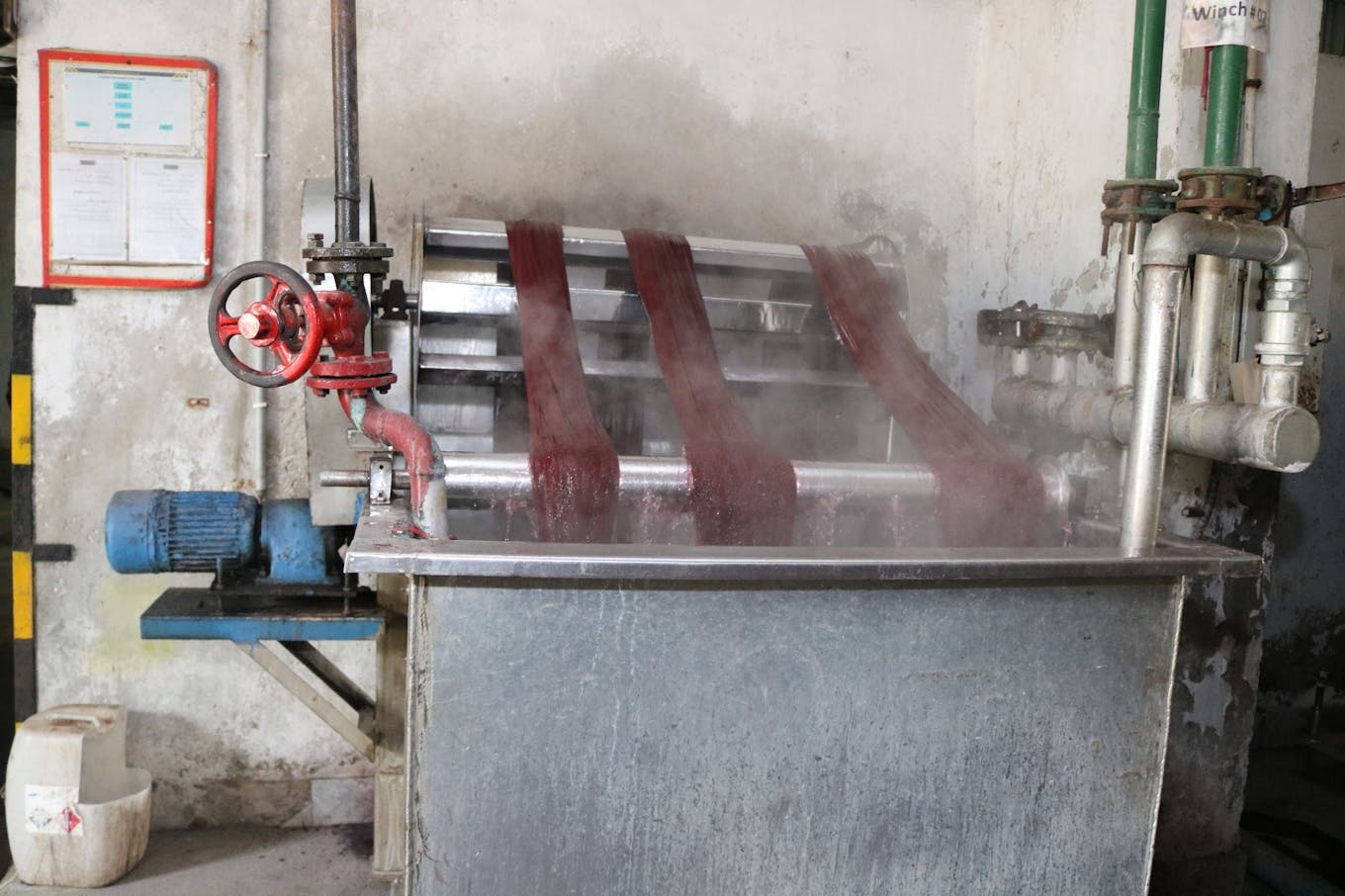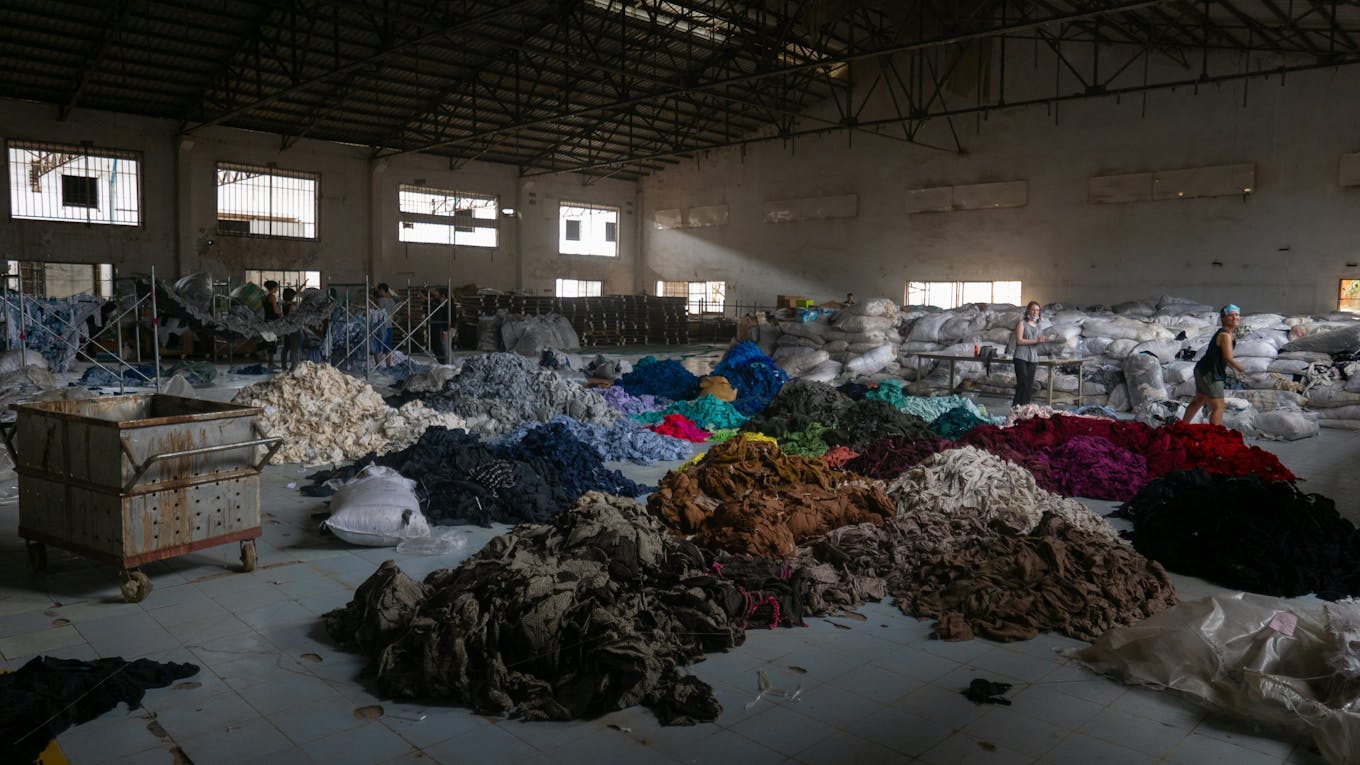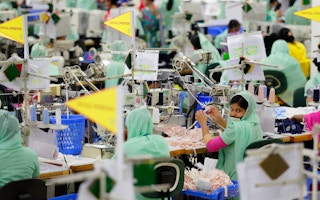A wave of Europe-led sustainability regulations are coming for big fashion companies. At least 16 legislations have been proposed since the European Union adopted a strategy for sustainable and circular textiles in 2022, which calls for textiles sold to the EU to be more durable, free of hazardous substances and made up of mainly recyclable materials by the end of this decade.
As a result, Asian manufacturers, which supply over 70 per cent of the EU’s textiles, now also see stronger incentives to switch to low-carbon equipment and materials in order to stay in business. Many, however, operate on thin margins and struggle to access affordable capital, so changes have yet to happen at scale.
Across India, Bangladesh, China and Southeast Asia, where many of the largest exporting garment manufacturers are located, facilities could still be heavily coal-reliant, with inefficient equipment such as industrial boilers being used. The world’s largest fashion brands might have committed to more ambitious science-based climate targets in recent years, but according to the World Resources Institute, 96 per cent of a fashion brand’s footprint is still in its manufacturing supply chain.
Globally, advocacy groups are calling for major fashion brands to financially support manufacturers in their transition away from fossil fuels, instead of passing the buck. An estimated US$1 trillion in investments is needed to get the fashion industry – which accounts for between 2 to 8 per cent of global greenhouse gas emissions – to net zero by 2050.
Non-profits like Dutch-based Fashion For Good have taken the first step to crowd in capital from industry players and impact investors with different blended finance vehicles to help apparel manufacturers adopt new technologies.
For example, the Good Fashion Fund, active since the end of 2019, has made investments of between US$1 million to US$5 million to help Asian textile suppliers to popular brands upgrade their factories, which in some instances include installing more energy-efficient spinning or fabric treatment equipment and solar panels.
Such initiatives serve to nudge existing financial institutions by showing them that investing in these smaller manufacturers can also pay off in terms of returns. Last November, fast fashion brand H&M became the first to partner Southeast Asia’s largest bank DBS in jointly launching a new green loan initiative, aimed at slashing supply chain emissions in the apparel sector.
The Swedish fashion retailer, whose largest clothing production markets are China and Bangladesh, hopes to tap on the Singapore bank’s extensive network in Asia to fund factory upgrades that can help suppliers improve their energy effiency and decarbonise, said Tan Su Shan, group head of institutional banking at DBS.
Unlike traditional banking solutions, this programme will provide supplying factories direct access to financing with “highly favourable terms” from DBS as well as technical support from United States-based sustainability consultant Guidehouse for specific greenhouse gas reduction activities approved by H&M. The two organisations did not reveal the loan rates.
The first transaction under H&M’s Green Fashion Initiative was completed last year with Indian manufacturer Raj Woollen, which used the loan to fund the installation of solar panels, energy-efficient motors and water conservation technologies to reduce its carbon emissions.
Going beyond ‘low hanging fruits’
H&M is widely considered a pioneer of fast fashion, which refers to the business model of mass-producing trendy clothing with a short lifespan at low cost. It is the world’s second largest apparel company by sales volume and churns out about 3 billion garments per year.
But over the past few years, the Swedish retailer has been trying to shed its image as one of the industry’s biggest polluters. It is among the handful of the world’s biggest fashion brands that have pledged to cut at least half of their supply chain emissions by the end of this decade.
Kim van der Weerd, intelligence director at Transformers Foundation, which advocates for more sustainable practices in the denim industry, told Eco-Business that this new programme by DBS and H&M is “a necessary piece of the puzzle” to address some of the barriers to funding cited by suppliers, especially for emissions reduction projects that offer “quick” financial returns within two years or less. These are typically energy efficiency investments, such as to improve boiler efficency or recycle heat waste from production processes.

Boilers that enable dyeing and treating of textiles still largely rely on coal and natural gas. Image: ILO Asia-Pacific via Flickr
But for suppliers who have already cleared this “low hanging fruit” with quicker paybacks, there are concerns that they have to take on more debt and risk when they make investments to decarbonise other aspects of their factories with long or non-existent payback periods, said Van der Weerd.
So even if debt financing is available, some of these suppliers will not take them on if projects do not offer returns and lead to an increase in their operating expenses, for example where alternative fuel sources could be more expensive than fossil fuels. For this reason, in addition to securing the capital for big upfront investments, suppliers need to be guaranteed higher prices, she said.
Karen Sim, a senior sustainability analyst at global sustainability non-profit Forum for the Future noted that how far the loans can go to decarbonise fast fashion’s supply chain will “depend on what activities or measures are covered under the scheme”.
In response to queries, a spokesperson from DBS clarified that under the scheme, loans can be used for carbon reduction activities beyond energy efficiency solutions and renewables and that the consultant Guidehouse will work with suppliers on development and implementation of these decarbonisation activities.
All the loans will also be structured according to the bank’s sustainable and transition finance framework, which lays out specific economic activities it considers green for each sector.
Risk-sharing
Richard Wielechowski, a senior investment analyst in the textiles programme at financial think tank Planet Tracker, said that the collaborative financing tool is a positive step and the first one he has seen that is led by a big brand.
An analysis of funding sources across the textile supply chain by Wielechowski and his colleagues found that suppliers often struggle to raise financing from international financial institutions due to risks associated with investing in developing markets and the potentially small deal sizes. Their research showed that accessing financing is particularly challenging for those further upstream in the textile supply chain.
The new financing tool addresses a lot of the roadblocks that suppliers face in getting the capital needed to decarbonise through a risk-sharing type of commercial deal, said Wielechowski. But given the highly fragmented nature of the industry’s supply chain with a “very long tail of small players”, it is impossible for commercial loans alone to close the financing gap, he said.
“When you’re talking about small workshops that have two or three people, are you really going to put solar panels on the roof? Maybe. But sometimes the businesses you’re dealing with are so small that getting it into a scalable commercial deal size is a real challenge and that’s where philanthropic capital will have to pick up the baton.”
While experts agreed that decarbonising the industry’s supply chain is clearly needed, there remains the question of whether an industry premised on the mass production, consumption and disposal of cheap clothing can truly be sustainable.
“Making the supply chain as sustainable as possible will not make the fashion industry sustainable if it remains committed to volume growth and addicted to fossil fuel-based fibres,” said Wielechowski.

Fossil fuel-based polyester is the world’s most widely-used clothing fibre. The cheap and durable synthetic fibre has enabled the growth of fast fashion. Image: Francois Le Nguyen via Unsplash
Nearly half of the world’s clothing uses polyester, a by-product of petroleum, which arguably enabled the rise of fast fashion. Compared to alternative fibres which might be more circular, fossil fuel-based fibres cost less, and may get even cheaper in time as oil and gas majors shift away from gasoline and diesel production towards petrochemicals, said Wielechowski.
“If anything, it is going to become more dominant because we’re limited in how much more cotton we can grow [due to climate change],” he said.
“
Making the supply chain as sustainable as possible will not make the fashion industry sustainable if it remains committed to volume growth and addicted to fossil fuel-based fibres.
Richard Wielechowski, senior investment analyst, Planet Tracker
H&M has pledged to switch to entirely “sustainable fabrics” by 2030, but what it considers “sustainable” is vaguely defined. The brand has been sued twice for greenwashing in the US, where it was accused of “false” and “misleading” sustainability marketing as well as making exaggerated environmental claims about its “Conscious Choice” collection to capitalise on a growing base of eco-conscious consumers. The latter lawsuit was dismissed last June.
Uneven responsibility-sharing is the ‘far larger issue’
A report published last year by the Transformers Foundation flagged the need for the fashion industry’s pursuit of science-based targets to take into account feasibility, equity and financing, so that suppliers do not disproportionately bear the burden of decarbonisation.
Van der Weerd said suppliers mostly expressed frustration that brands were not only unwilling to share the costs to decarbonise, but declined to pay them a higher price for products with lower emissions impacts.
According to the study, some suppliers also shared that brands rarely make long-term commitments to them and procure from elsewhere if they can find cheaper prices. This makes it difficult for suppliers to demonstrate to banks that they have future orders that can enable them to repay a loan taken to upgrade their factory.
Current climate action strategies reinforce a “broken top-down approach to sustainability that ignores supplier input and experience”, which has served the industry poorly for decades, the report wrote. “The first step towards collective action is decoupling the ‘who does how much’ question from the ‘who pays’ question.”
“Just because a company needs to deeply decarbonise to meet our collective climate goals, that does not mean they’re automatically responsible for paying the tab,” the report stated. “Contributions should be linked to ability to pay and could factor in equity, margins and historical emissions, for example.”
Sim agreed that this uneven and inequitable sharing of responsibility for climate action within the value chain is the “far larger issue that needs to be urgently addressed.”
For instance, when pressured to set and deliver targets, brands turn to their supply chains to do so. However, when suppliers are not able to meet those targets, they could be seen as unmotivated, she said.
“A truly collective approach to decarbonisation is needed, where responsibility for climate action is shared equitably between key stakeholders,” said Sim. “One way to facilitate this is the creation of safe spaces where brands and supplier voices can equally be shared, heard, and respected. With this, a new more truly collaborative and equitable way for working together can be designed and eventually mainstreamed.”
At the COP27 climate summit in 2022, H&M announced its target to reduce its absolute Scope 1, 2 and 3 emissions by 56 per cent by 2030, compared with a 2019 baseline. Like others in the sector, Scope 3 emissions – which includes indirect emissions from the production of fabrics, to the use of the clothing and its eventual disposal – make up nearly all of its total emissions.
Thus far, H&M has cut its Scope 1 and 2 emissions by 8 per cent as well as its Scope 3 emissions by 7 per cent. It has set aside an annual budget of around SEK 3 billion (US$ 287.7 million) to phase out coal and increase the share of sustainable materials throughout its supply chain.
Ulrika Leverenz, H&M Group’s head of green investment said that the industry is committed to tackle its negative climate impact, but that any impactful climate action requires collaborative financing. More brands and financial institutions need to take action, she said.










